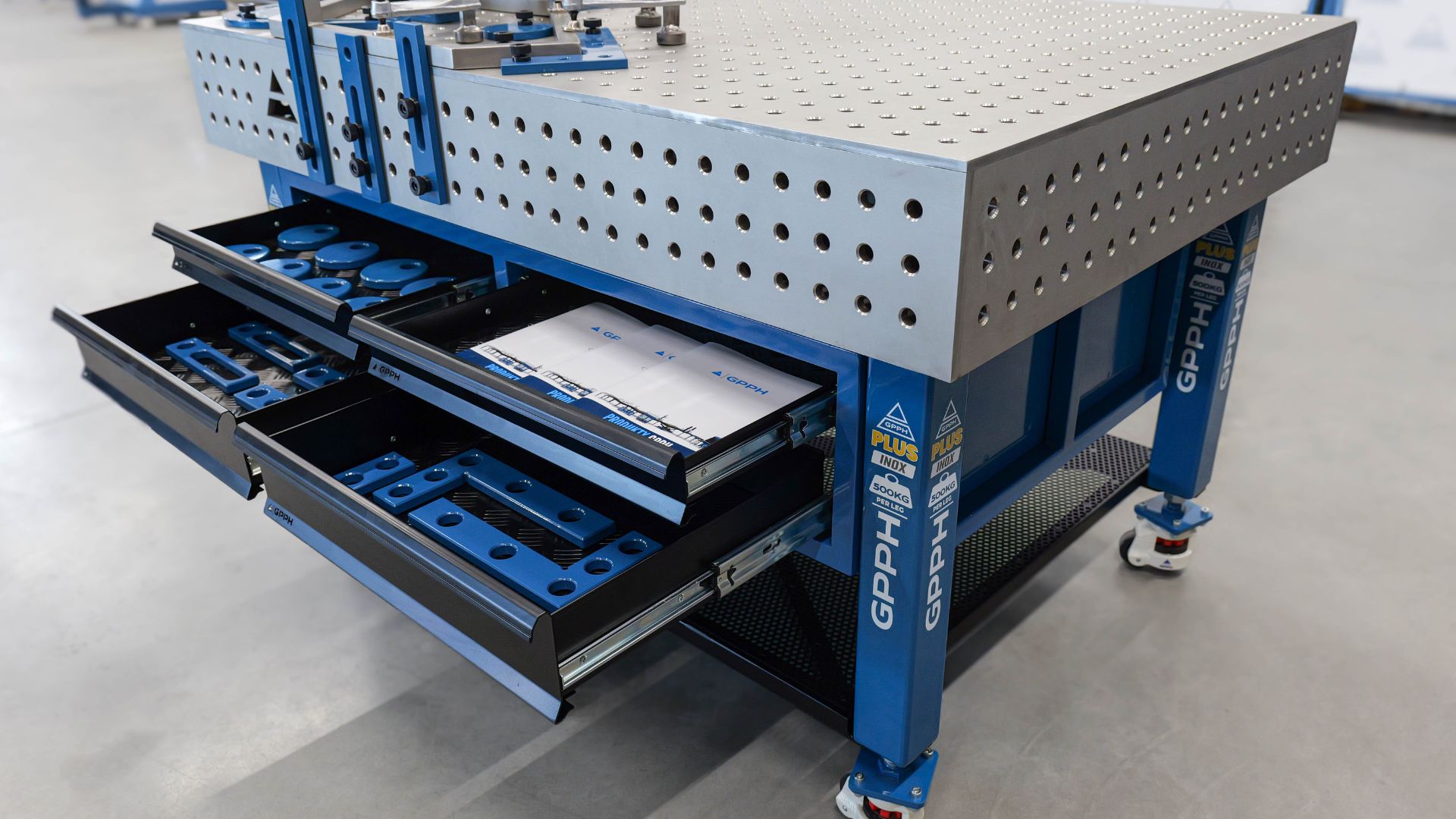Stainless Welding Tables: https://gpph-group.com/en/products/traditional-stainless-welding-table/
In the field of welding, particularly when working with aluminum, the choice of equipment can significantly impact the quality of the work and the efficiency of the process. One of the most critical pieces of equipment in a welder’s arsenal is the welding table. For those who specialize in aluminum welding, stainless steel welding tables, like those offered by GPPH, present numerous advantages that justify the investment.
The Importance of the Right Material
Aluminum is a unique material to work with due to its high thermal conductivity and low melting point. These properties make it particularly sensitive during the welding process. A welding table made of stainless steel is ideal for working with aluminum because stainless steel does not interact negatively with aluminum, unlike other metals that could cause contamination or galvanic corrosion.
Stainless steel tables ensure a cleaner working environment, minimizing the risk of contamination that could affect the weld’s integrity. This is crucial for maintaining the structural strength and aesthetic quality of the welds, particularly in industries where precision and appearance are paramount, such as automotive, aerospace, and architecture.
Durability and Resistance to Corrosion
One of the standout features of stainless steel is its exceptional resistance to corrosion. Welding tables are often exposed to a variety of chemicals, heat, and spatter that can degrade lesser materials over time. Stainless steel, however, maintains its integrity even in harsh working conditions, ensuring that the table remains a reliable and sturdy platform for years.
This durability makes stainless steel tables a long-term investment. While the initial cost may be higher than tables made from other materials, the longevity and minimal maintenance requirements of stainless steel tables lead to lower overall costs in the long run. Moreover, the robust nature of stainless steel ensures that the table can handle heavy loads and resist warping or deformation, which is essential for maintaining a flat, stable surface necessary for precision welding.
Enhanced Cleanliness and Easy Maintenance
The smooth, non-porous surface of stainless steel welding tables offers another significant advantage: ease of cleaning. In welding, particularly with aluminum, cleanliness is critical to avoid contamination and defects in the weld. Stainless steel tables are easy to wipe down and keep clean, which is especially important when changing between different types of welding projects.
Furthermore, stainless steel is resistant to the buildup of oxidation and residue, which can be problematic on other types of tables. This resistance not only makes the table easier to maintain but also ensures that the work surface remains free of contaminants that could compromise weld quality.
Heat Resistance and Stability
Welding processes often involve high temperatures, and the work surface must be able to withstand these conditions without degrading or deforming. Stainless steel is known for its high heat resistance, which is particularly beneficial when welding aluminum. The metal’s stability under heat ensures that the work surface remains consistent, providing a reliable platform that supports the precision required in aluminum welding.
The thermal properties of stainless steel also prevent unwanted heat transfer, which could affect the aluminum workpiece. This stability allows for more controlled welding conditions, reducing the risk of warping or other issues that could arise from heat-induced distortion.
Aesthetics and Professionalism
In addition to their functional benefits, stainless steel welding tables also offer an aesthetic appeal that can enhance the professionalism of a workshop. The sleek, modern look of stainless steel presents a clean and organized workspace, which is important not only for operational efficiency but also for making a positive impression on clients and stakeholders who visit the facility.
Environmental and Health Considerations
Stainless steel is a sustainable material, known for its recyclability. Investing in stainless steel tables aligns with environmentally conscious practices, reducing the carbon footprint associated with equipment disposal. Additionally, the ease of cleaning and maintenance of stainless steel reduces the need for harsh chemicals, contributing to a healthier work environment.
Versatility Across Applications
While aluminum welding might be a specific application, the versatility of stainless steel tables extends to other types of welding and fabrication tasks. This adaptability makes them a practical choice for workshops that handle a variety of projects. The non-reactive nature of stainless steel ensures that it can be used safely with different metals without the risk of cross-contamination, making it a universal solution in diverse welding environments.
Conclusion
Investing in stainless steel tables for aluminum welding, such as those offered by GPPH, is a decision that brings numerous long-term benefits. From enhanced durability and resistance to corrosion to superior cleanliness and heat stability, stainless steel tables provide a reliable and professional platform that supports high-quality welding. While the initial investment may be higher, the long-term savings in maintenance, replacement, and improved work quality make stainless steel tables a smart choice for any serious welder. By choosing stainless steel, you are investing in the future of your workshop, ensuring that it remains efficient, professional, and capable of producing the best possible results.

